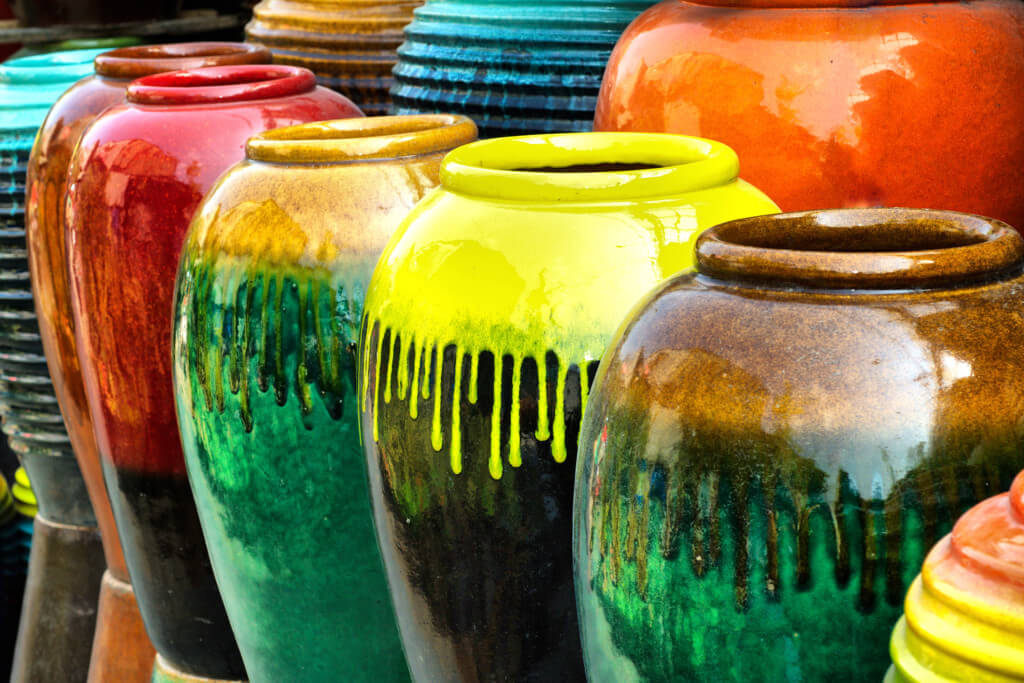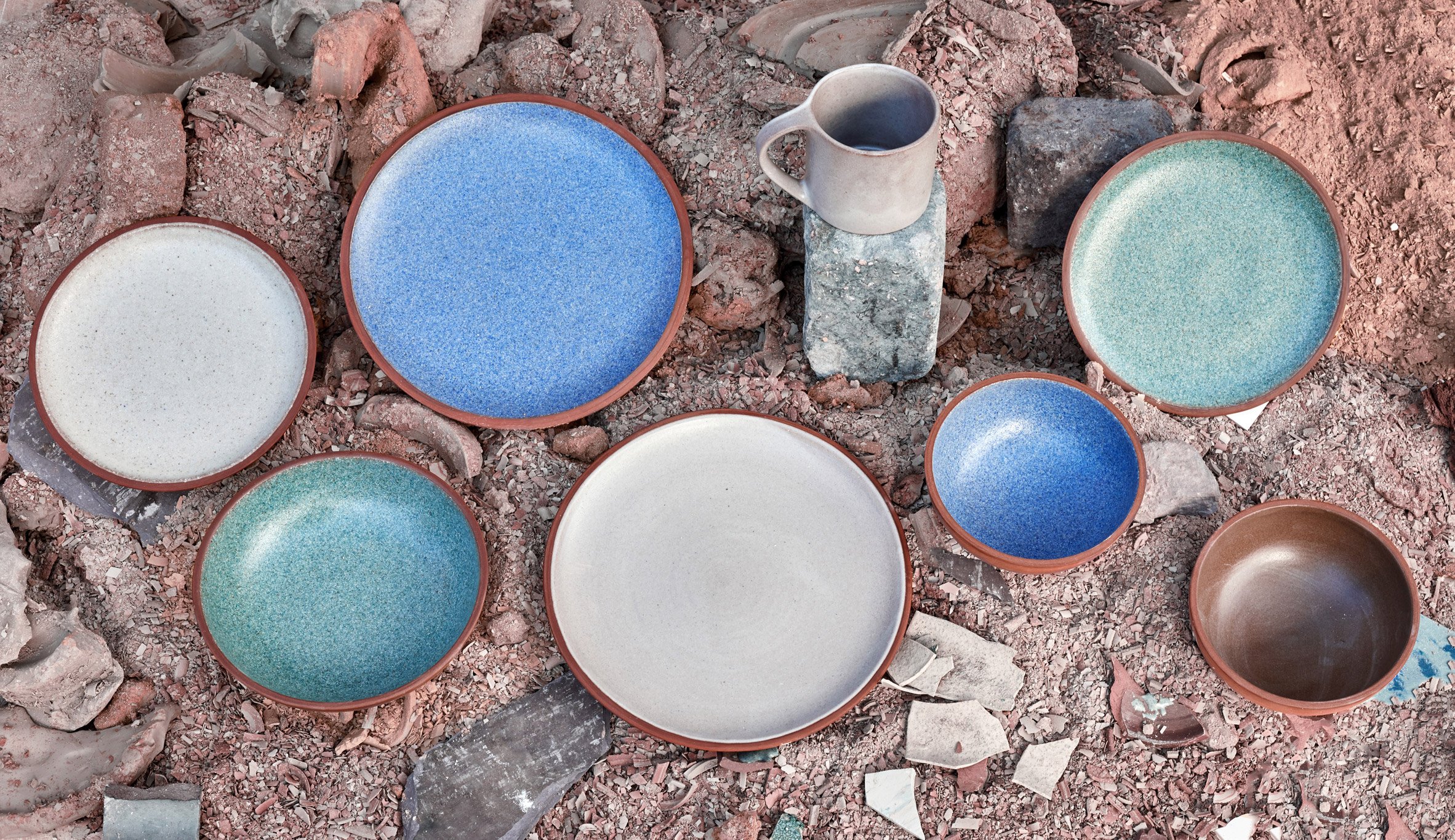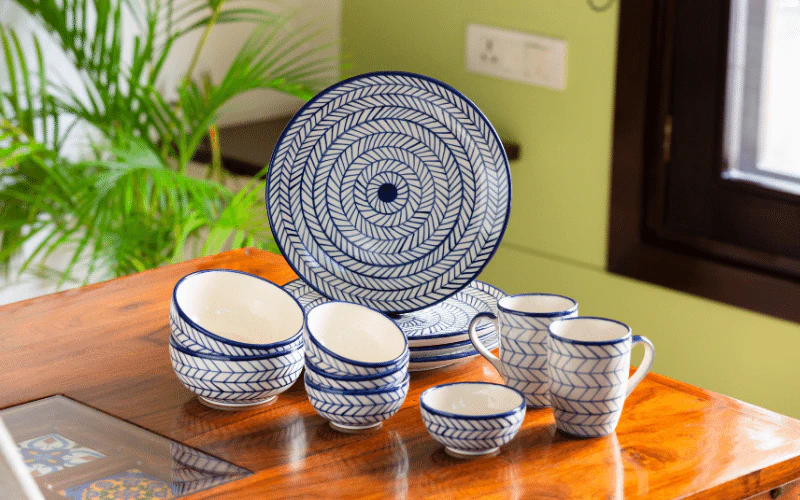Last Updated on June 3, 2024 by Annie Baldwin
Ceramic materials like pottery clay and porcelain are long-lasting and durable.
These eco-friendly materials can be recycled and do not produce harmful waste when they break down.
This article explores the eco-friendly qualities of ceramic while also looking at potential environmental impacts in the production process.
Is Ceramic Environmentally Friendly?

Ceramic materials are generally considered environmentally friendly due to their durability, non-toxicity, and recyclability.
Ceramics do not decompose or leach chemicals, meaning they have negligible pollutive effects.
The long lifespan of ceramics also reduces waste versus single-use materials.
When disposed of properly, ceramics can be recycled repeatedly with minimal loss of quality.
While ceramic production requires energy, the green benefits appear to outweigh the costs.
Key Points
- Ceramics like clay and porcelain are inert, non-biodegradable substances that do not decompose into toxic materials
- Ceramics are durable and long-lasting, resulting in less waste generation compared to disposable materials
- Fired ceramics can be recycled indefinitely by grinding and reusing as material for new products
Our Opinion
Based on the inertness, durability, and recyclability of ceramic materials, we believe ceramics are one of the more environmentally friendly material options available.
While ceramic production requires energy inputs, the minimal pollutive effects and closed-loop potential of ceramics make them a greener choice compared to single-use plastics and constantly replace modern materials.
With proper disposal and recycling, ceramics can be reused repeatedly with little degradation in quality. Overall, ceramics earn their reputation as an eco-friendly material.
Is Ceramic Production Environmentally Friendly?
Ceramics are generally considered an environmentally friendly material. Once fired in a kiln, ceramics like pottery and sculptures become very durable and can last for thousands of years without degrading. When they eventually break down, ceramics simply return to their original dust form rather than producing harmful gases or waste.
Compared to materials like plastics and metals, ceramics have negligible pollutive behavior and are easily recycled. The raw materials used to create ceramics, like clay and minerals, are natural and biodegradable.
However, there are some potential environmental concerns to consider in ceramic production:
- Toxic chemicals may be used in glazes, pigments, and clay processing.
- Firing kilns requires a lot of energy and can release greenhouse gases.
- Mining clay and minerals disturbs land and habitats.
The ceramic industry is working to develop more sustainable practices by reducing energy use, recycling water, and eliminating harmful chemicals. Overall, ceramics can be an excellent eco-friendly material choice with proper production methods.
How Recyclable Is Ceramic?

Ceramics are highly recyclable materials. After use, ceramic products can be crushed and ground down into a usable powder or mix. This recycled ceramic material can then be molded into new products or incorporated into other materials like concrete and tile.
Compared to other materials like plastics, metals, and glass, ceramics are simpler to recycle because they can be directly reformed into new products without complex processing. Ceramics also maintain their material integrity when recycled multiple times, whereas other materials degrade in quality after recycling.
Some key advantages of ceramic recycling:
- Ceramics can be recycled an infinite number of times without loss of quality.
- Recycled ceramics require less energy to remanufacture compared to virgin materials.
- Mixing in recycled ceramics can enhance the durability and lifespan of other materials like concrete.
- Recycling reduces the need for mining raw ceramic materials like clay, feldspar, and talc.
While not yet widely adopted, ceramic recycling presents an enormous opportunity to reduce waste and energy use. With proper infrastructure, nearly 100% of ceramics could be continually recycled into new products. Overall, the recyclability and recycled material integrity of ceramics make them one of the most eco-friendly and sustainable material options.
Ceramic vs. Plastic: Which Is Better for the Planet?

When comparing ceramics and plastics, ceramics are generally the more sustainable and eco-friendly material option. Here’s a look at some of the key differences:
- Ceramics are made from natural materials like clay and minerals, whereas plastics are synthesized from fossil fuels. This gives ceramics an environmental edge.
- Ceramics are extremely durable and long-lasting, meaning fewer resources are required for replacement. Plastics degrade faster and require more frequent replacement.
- At the end of life, ceramics can be recycled or will naturally decompose. Plastics take centuries to decompose, polluting land and oceans.
- The production of ceramics requires less energy than plastics manufacturing. Firing kilns used in ceramic production also release fewer greenhouse gases.
- Ceramics are inert and non-toxic when produced properly. Some plastics leach harmful chemicals during use or decomposition.
Of course, plastics still have benefits like cost, weight, and moldability that make them useful in many applications. But when considering environmental impact over the full product lifecycle, ceramics compare very favorably to plastics. Their natural origin, durability, recyclability, and non-toxicity give ceramics a clear sustainability advantage.
Tips for Eco-Friendly Use of Ceramic
When used thoughtfully, ceramics can be an excellent eco-friendly choice. Here are some tips:
- Choose locally produced ceramics when possible, to reduce transport emissions. Supporting local artisans also boosts community.
- Opt for vintage or antique ceramics, giving new life to pre-existing pieces. Check secondhand stores, auctions, and online marketplaces.
- If buying new, look for ceramics made from natural clays and glazes free of toxic ingredients. Lead-free glazes are safest.
- Handwash instead of dishwashing ceramics. Avoid harsh detergents; mild soap and warm water are best. Extends lifespan.
- Repair any chips or cracks. Kintsugi, the Japanese art of mending breaks with gold lacquer, embraces imperfection.
- Compost unearthed ceramic shards. Small pieces can enrich the soil as they decompose. Reuse larger shards in mosaic art.
- Donate unwanted ceramics to charity shops or community centers for reuse. Some facilities may also accept ceramics for recycling.
With some mindful practices, ceramics can be an environmentally friendly and sustainable addition to everyday life. Their natural durability allows pieces to be cherished and passed down through generations.
The Future of Sustainable Ceramic Production
The ceramic industry has made strides in recent years towards more sustainable practices, but there is still room for improvement. Here are some ways ceramic production may become greener in the future:
- Increased use of renewable energy like solar or wind power to fire kilns. This reduces reliance on fossil fuels. Some studios already use waste veggie oil for firing.
- Further development of waterless casting techniques to reduce water usage. Slip casting with reclaimed slip is one example already in use.
- More efficient kilns and use of recycled heat energy to fire ceramics multiple times in one go. This saves energy.
- Scaling up research into lower carbon alternative clays, like geopolymer ceramic made from industrial waste.
- Expanding closed-loop recycling of ceramic shards and dust back into clay production. This diverts waste from landfills.
- Stricter emissions regulations on factories to reduce air pollution. Improved filtration technology can help.
- Support for small-scale local potteries focused on handmade techniques over mass production. This encourages artistry.
- Greater consumer awareness of sustainability issues driving demand for eco-friendly ceramics.
With creativity and commitment to green principles, the centuries-old ceramic arts can continue sustaining culture while nurturing the environment. The path ahead looks promising.
FAQ
Is Ceramic a Biodegradable Material?
Ceramic materials like clay and porcelain are not biodegradable. They are inorganic substances that do not decompose over time. Ceramics can last for thousands of years without breaking down.
What Are the Environmental Impacts of Ceramics?
Ceramics have a relatively low environmental impact compared to plastics and metals. They require high heat for production which consumes energy, but do not release toxic emissions. Ceramics are inert and stable so do not leach chemicals into soil or water. Their durability means there is less waste.
Is Ceramic Better Than Plastic?
Yes, ceramic is more environmentally friendly than plastic. It is non-toxic, stable, and can be reused and recycled. Plastic takes hundreds of years to decompose, leaches chemicals, and creates large amounts of waste.
Is Ceramic Recyclable or Not?
Ceramic is highly recyclable. Fired clay and porcelain can be ground up and reused to make new ceramic materials. Recycling ceramic reduces waste and the need for new raw material extraction. Some ceramics contain materials like lead that can limit recyclability.
Conclusion
Ceramic materials like pottery and porcelain are considered environmentally friendly. Ceramics are non-toxic, inert substances that do not degrade into harmful compounds. When disposed of properly, ceramics can be recycled indefinitely. While ceramic production requires energy, the durability and recyclability of ceramics makes them a greener choice than single-use plastics and disposable materials. Overall, ceramics can be classified as an eco-friendly material option.
